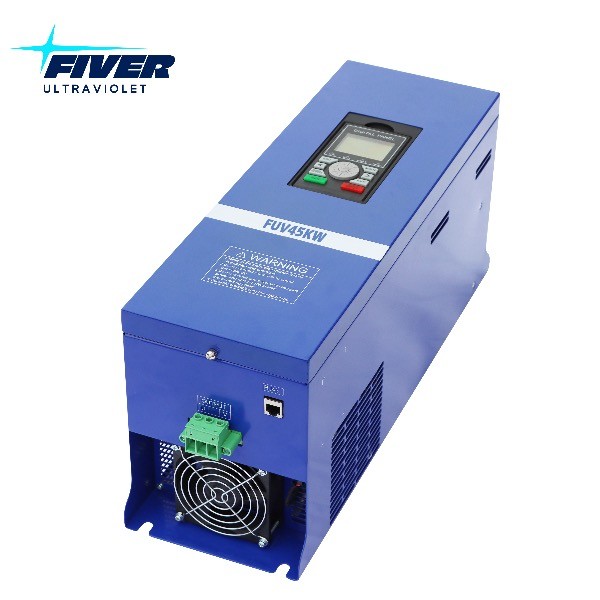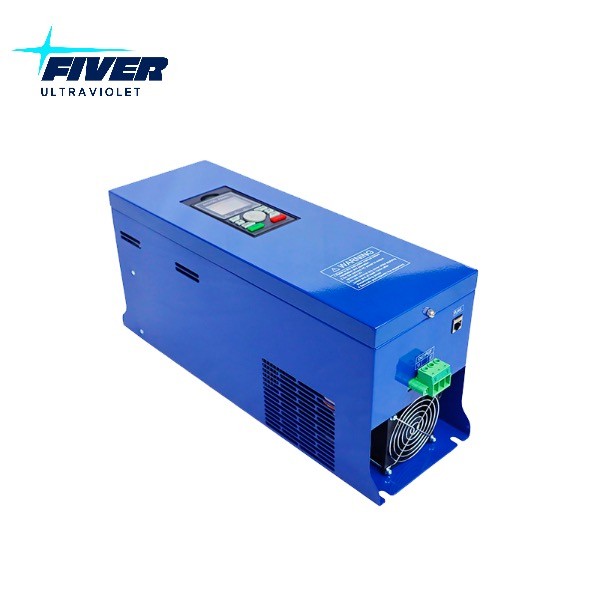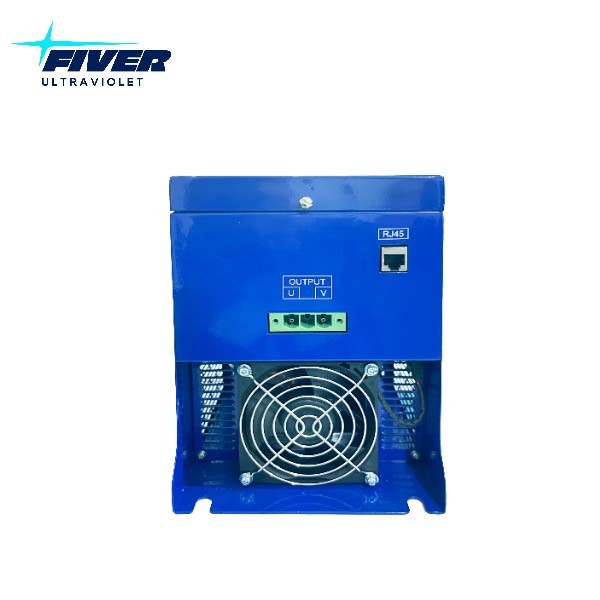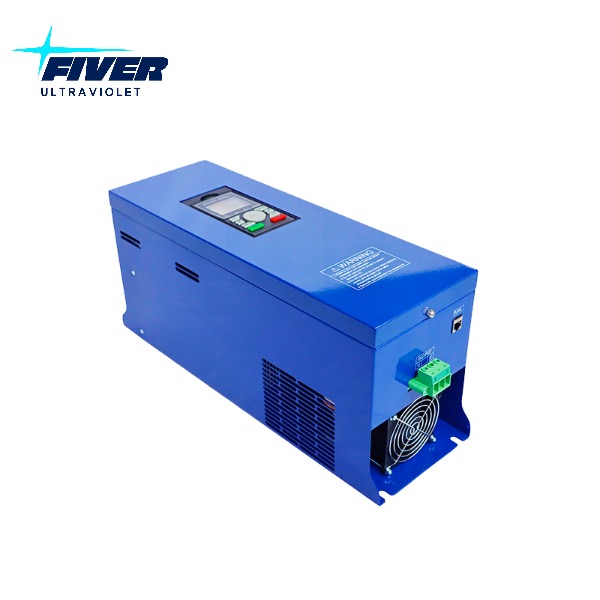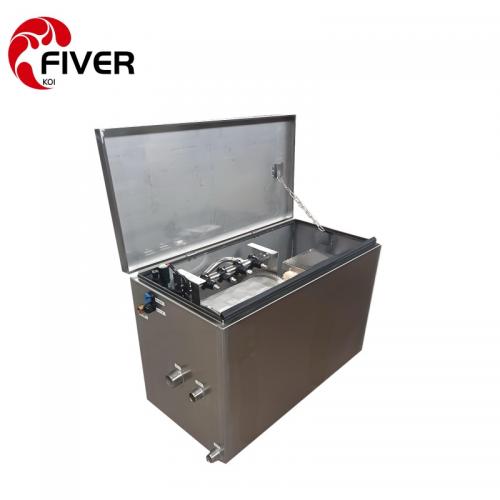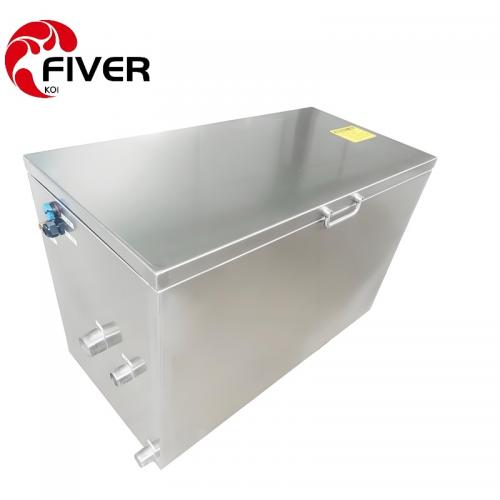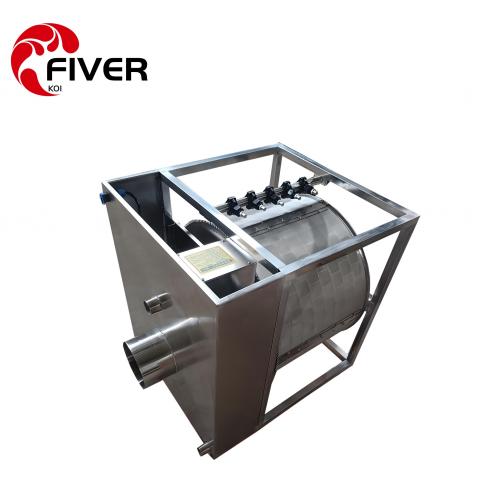35KW Industrial Electronic Power Supplies for UV Printing
35KW Industrial Electronic Power Supplies for UV Printing
Brief Parameters for the 35KW Ballast for Ink Curing
| Product Name | Intelligent uv ballast | Product brand | FIVER |
| Product Power | 35KW | Product model | FUV35KW |
| Input Voltage (V) | 360-480V ac | Max Output Current (A) | 17A |
| Input Current (A) | 53.2A | Lamp Operating Voltage | 3000V |
| Output Voltage Range (V) | 2850-3050 | Cooling Method | Air Cooling |
( For more details please check the datasheet in PDF attachment)
Product Featueres for this UV Digital Power Supply
1. Wide voltage adaptability, Fiver's 35KW electronic power supply for uv printing can operate normally with input voltage of 360V-480V.Different regions and countries may have varying voltage standards. A device with wide voltage adaptability can be used in multiple locations without the need for additional voltage converters or adapters. what's more it can withstand these fluctuations and operate reliably under different voltage conditions. Eliminating the need for additional voltage converters or adapters can save costs for users and reduce the complexity of the setup process.
2. Fast dynamic response speed, Our ballast for ink curing only takes 500ms from standby to full power output. Devices with fast dynamic response speed can improve user experience by delivering quick and responsive feedback. This can be particularly important for uv curing systems. Fast dynamic response speed helps maintain system stability by minimizing delays in responding to changes. This is crucial in applications where stability is critical, such as in power electronics or control systems. Faster response times can also contribute to energy efficiency by optimizing the performance of the device and reducing unnecessary energy consumption.
3. Stepless Dimming. Fiver's uv digital power supply can Infinitely adjustable output power from 10% to 100% with smooth dimming, and the standby power can operate stably for a long period.
4. Independent air duct design, Our smart uv ballast effectively isolating components and pollutants, ensuring the power supply can operate in harsh environments for a long period.
5. Excellent heat dissipation. This 35KW UV ballast for ink curing, Integrated variable frequency fan control function, intelligently controlling the ventilation. stable output.
6. Multipal Communication Interface. Standard RS485 communication interface, supporting Modbus RTU protocol.and expansion for CANopen and Ethernet communication.
Applications for This Fast Dynamic Response UV Ballast and Power Supplies.
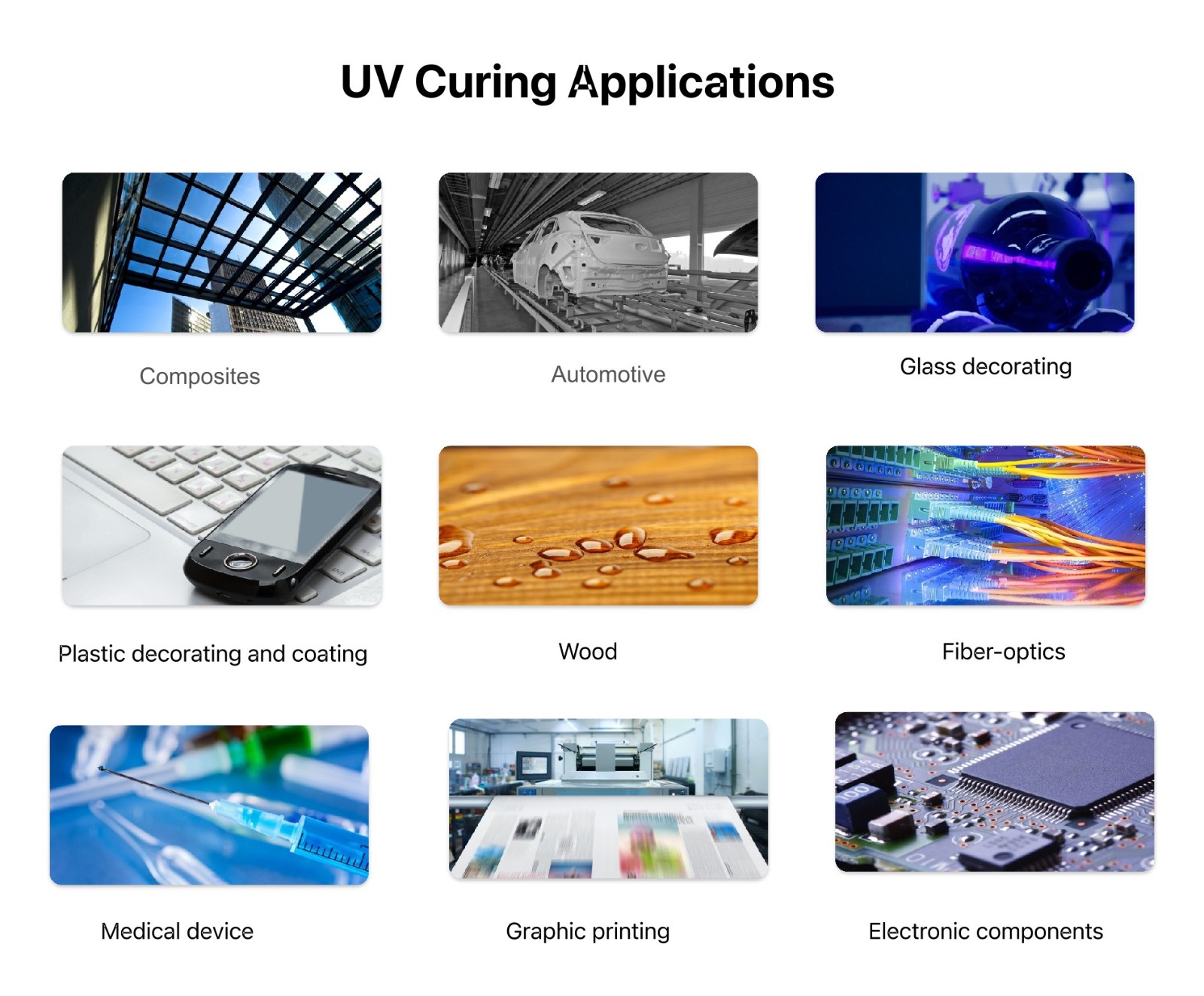
What Are Some Common Applications of UV Curing in Commercial and Industrial Printing?
UV curing technology is widely used in various applications in commercial and industrial printing. Some common applications include:
1. Label and packaging printing: UV curing is commonly used in the printing of labels, flexible packaging, and cartons. The fast curing time and high-quality results make UV-cured prints ideal for packaging materials that require durability and visual appeal.
2. Signage and display graphics: UV curing is popular in the production of signage, banners, and display graphics. The vibrant colors and sharp details achieved through UV curing technology make prints stand out and attract attention in retail and advertising settings.
3. Direct-to-substrate printing: UV curing allows for printing directly onto a wide range of substrates, including glass, metal, plastic, and wood. This versatility makes UV curing suitable for applications such as printing on promotional items, electronic devices, and architectural elements.
4. Textile and garment printing: UV curing technology is also used in textile and garment printing, particularly for specialty applications such as printing on sportswear, swimwear, and accessories. UV-cured prints on textiles offer excellent color fastness and durability.
5. Decorative and functional coatings: UV curing is utilized for applying decorative and functional coatings on various products, such as furniture, flooring, and automotive parts. UV-cured coatings provide a high-gloss finish, scratch resistance, and protection against wear and tear.
Overall, UV curing technology finds extensive use in commercial and industrial printing across a wide range of applications, offering fast curing times, high-quality results, and versatility in printing on different substrates.
What are the Advantages for UV Curing in Commercial and Industrial Printing
Commercial printers and in-house printing operations have utilized UV inks and overprint varnishes for years to achieve faster productionspeeds, simplified cleanup, and zero VOC emission.UV-curable inks maintain dimensional stability at high production speeds and ensure consistent high opacity, vibrant colors, and superior print quality. Printing presses, ranging from flexographic and gravure to screen printing, digital inkjet, and offset, either come equipped with UV curing systems or can be upgraded with retrofit UV curing units.
UV Curing have following advantages in printing industry.
1> Rapid curing time, higher production efficency. As UV light can quickly cure inks and coatings
2> Higher printing quality. Increased printing consistency with vibrant colors and sharp details.
3> More durable. UV-cured prints are durable and resistant to scratching, fading, and chemicals, making them ideal for applications that require long-lasting and high-quality results
4> Environmentally friendly. UV curing is an environmentally friendly process as it does not emit volatile organic compounds (VOCs) or produce harmful by-products.
5> Energy cost saving. Compared to traditional drying, UV curing consums far less energy.
6> Expand capabilities due to ability to print on non-porous and heat sensitive substrates.
How Does UV Curing Technology Compare to Traditional Drying Methods in Terms of Speed and Quality?
UV curing technology is significantly faster than traditional drying methods in terms of curing time. While traditional drying methods such as air drying or heat drying can take hours or even days to fully cure inks and coatings, UV curing can achieve complete curing in a matter of seconds.This rapid curing time allows for increased production speed and efficiency in commercial and industrial printing processes.
In terms of quality, UV curing technology offers superior results compared to traditional drying methods. UV-cured prints have vibrant colors, sharp details, and a glossy finish, resulting in high-quality and visually appealing prints. The precise control of UV light exposure in the curing process also ensures consistent and uniform curing across the printed surface, leading to excellent print quality.
Are There Any Limitations or Challenges Associated with UV Curing Technology in Printing Processes?
While UV curing technology offers numerous benefits in commercial and industrial printing, there are some limitations and challenges associated with its use:
1. Substrate compatibility: UV curing is most effective on non-porous substrates that can quickly absorb and cure under UV light. Porous or heat-sensitive materials may not be suitable for UV curing, limiting the range of substrates that can be used in UV printing processes.
2. Initial setup costs: Implementing UV curing technology in printing facilities requires an initial investment in UV curing equipment, such as UV lamps, curing units, and specialized inks or coatings. The upfront costs of transitioning to UV curing may be a barrier for some printing businesses.
3. Health and safety considerations: UV light used in curing processes can pose health and safety risks to operators if proper precautions are not taken. Exposure to UV radiation can cause skin and eye damage, requiring the use of protective equipment and adherence to safety guidelines in UV curing operations.
4. Energy consumption: UV curing equipment consumes energy to generate UV light for curing prints, which can contribute to higher energy costs in printing operations. Optimizing energy efficiency and minimizing energy consumption are important considerations for sustainable use of UV curing technology.
5. Maintenance and upkeep: UV curing equipment requires regular maintenance and cleaning to ensure optimal performance and longevity. Proper maintenance practices, such as replacing UV lamps and cleaning reflectors, are essential to prevent downtime and maintain consistent curing results.
Despite these limitations and challenges, UV curing technology remains a popular choice in commercial and industrial printing for its speed, quality, and versatility in various applications.

